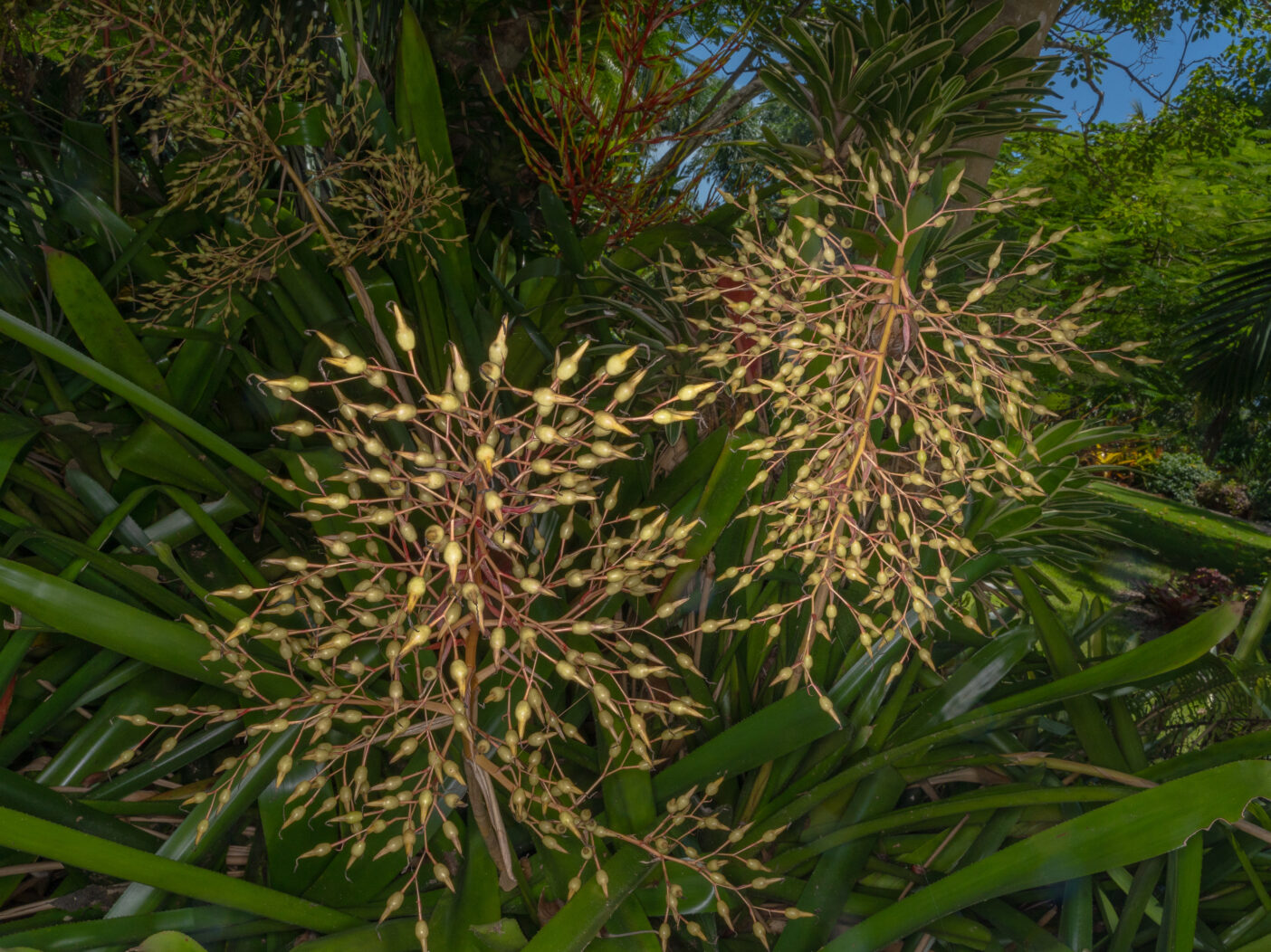
As a photographer, I’m a pretty basic person. Mostly, I just want my pictures to look good. My ideal scenario is to find subjects that are interesting, maybe pretty, and, at the very least, memorable. In my role as Multimedia Coordinator, that’s not hard. Everywhere I turn, there’s something new and fantastic to photograph. The Garden is ever-changing, and ever-fascinating.
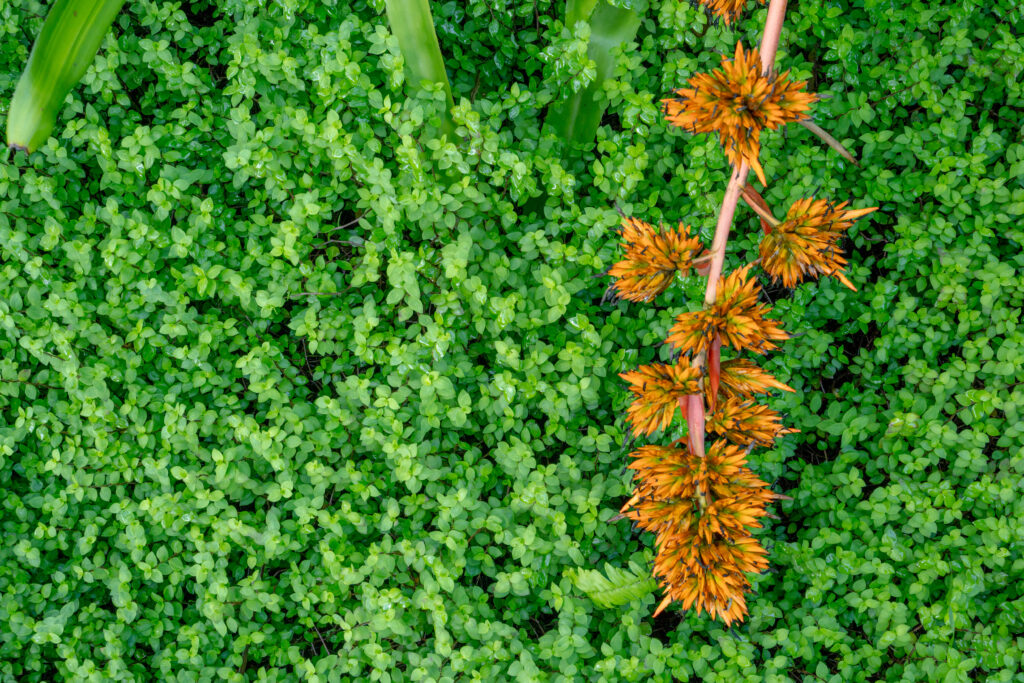
Above photo: Aechmea aquilega f. variegated
Lately, my eye goes to the colorful and intricate bromeliad spikes all over the Garden. To me, they look like fireworks—quiet ones, of course, that won’t scare the dog. After a few hundred photos and a bunch of conversations with horticulture staff later, I’ve come to understand these plant-world pyrotechnics a little better, discoveries that I’ll present to you here.
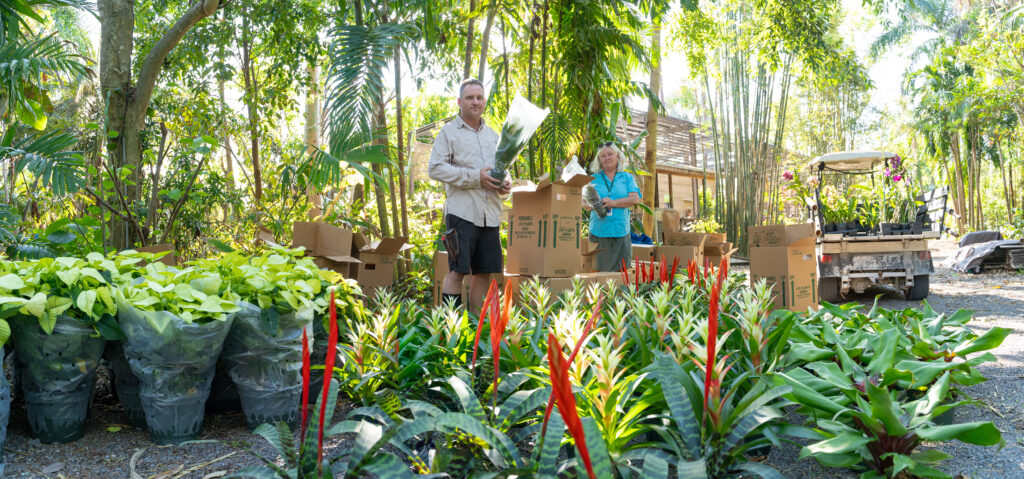
This picture of Director of Collections Nick Ewy and Liz Chehayl, the Brian Holley Curator of Collections, unpacking a shipment of bromeliads, is one of my favorite photos from my time at the Garden. It offers a glimpse of the behind-the-scenes work that goes on every day.
It’s an instructive photo in a sense, if you’re wondering how many bromeliads the Garden needs to look great. The answer—a lot! You’re greeted by bromeliads, an entire wall full of them, as you come through the Chabraja Visitor Center. You’ll encounter them throughout the Garden, from terrestrial species along the Kapnick Brazilian Garden’s winding path to epiphytic versions—those that don’t require soil—affixed to trees all over the place. In all, we have some 2,400 bromeliads on display.
WATCH: Bromeliad spikes put on quite a show throughout the Garden. See the incredible variety of color and texture in the inflorescence of these bromeliads.
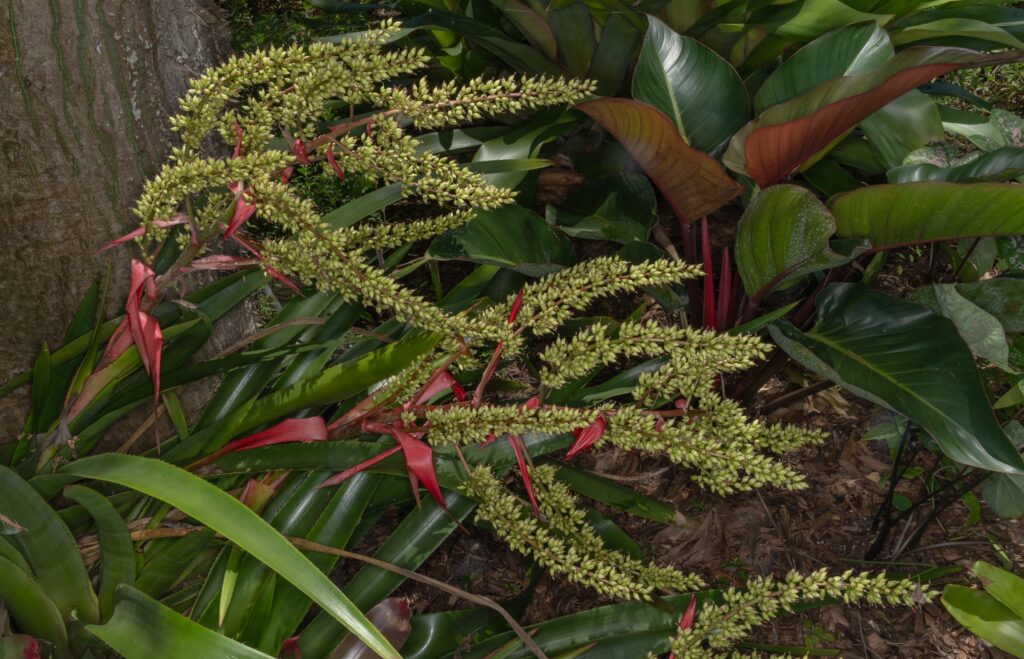
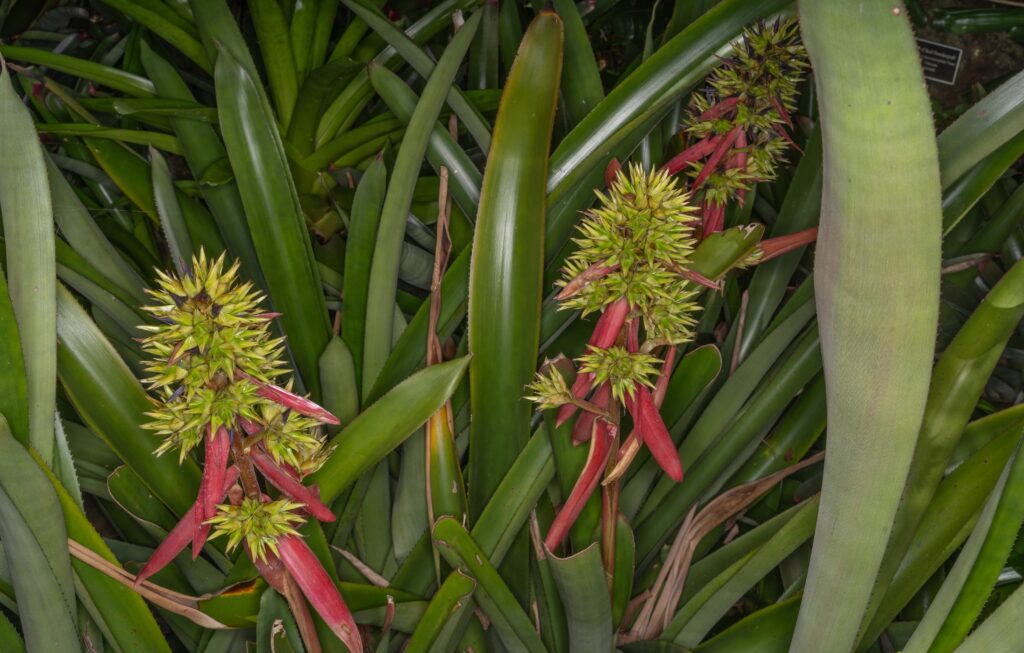
I had a lot of questions about bromeliad spikes once I started taking pictures of them. What exactly are they? Where do they fit in the plant’s life cycle? Here are the facts: The vivid and ornate stalks bromeliads put forth are generally referred to as spikes or scapes.
A bromeliad spike is not a true flower. The technical term is an inflorescence.
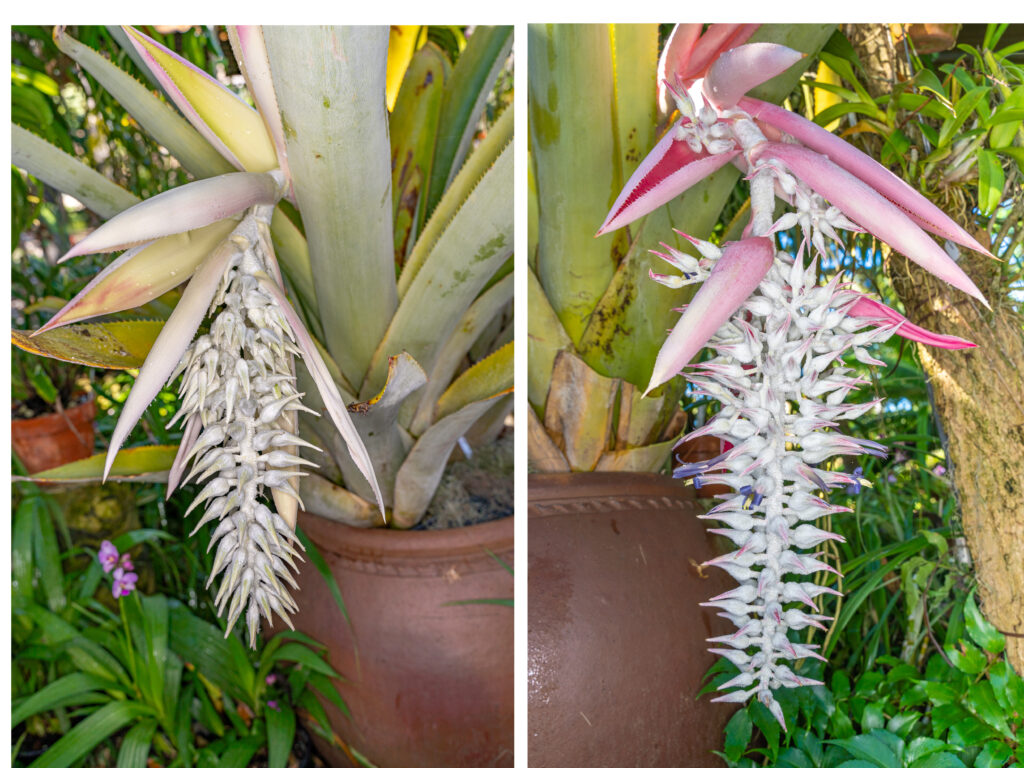
That inflorescence can last a long time. Many bromeliad spikes look good for months, only withering very slowly, along with the plant itself.
However, all is not lost for the bromeliad as it slowly dies. Bromeliads produce ‘pups’–offshoots of the original plant.
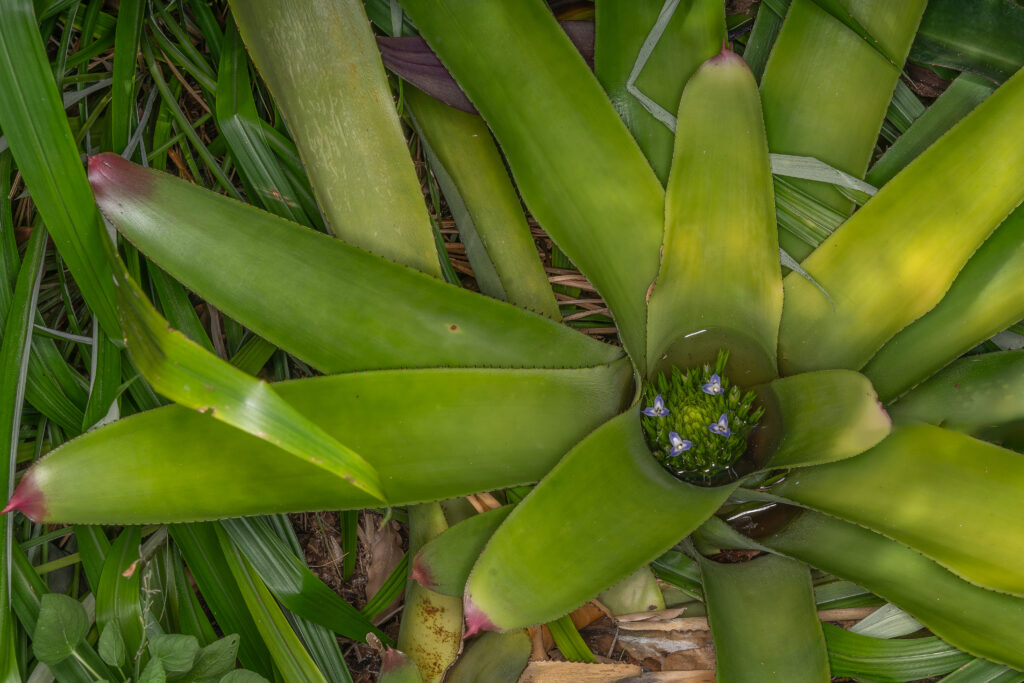
Tank bromeliads have a little “tank” of water in their center. A micro-world of growth rises out of it, a sunken habitat for a whole community of animals—microorganisms, insect larvae, lizards, frogs—all supported in one way or another by the water trapped in the plant.
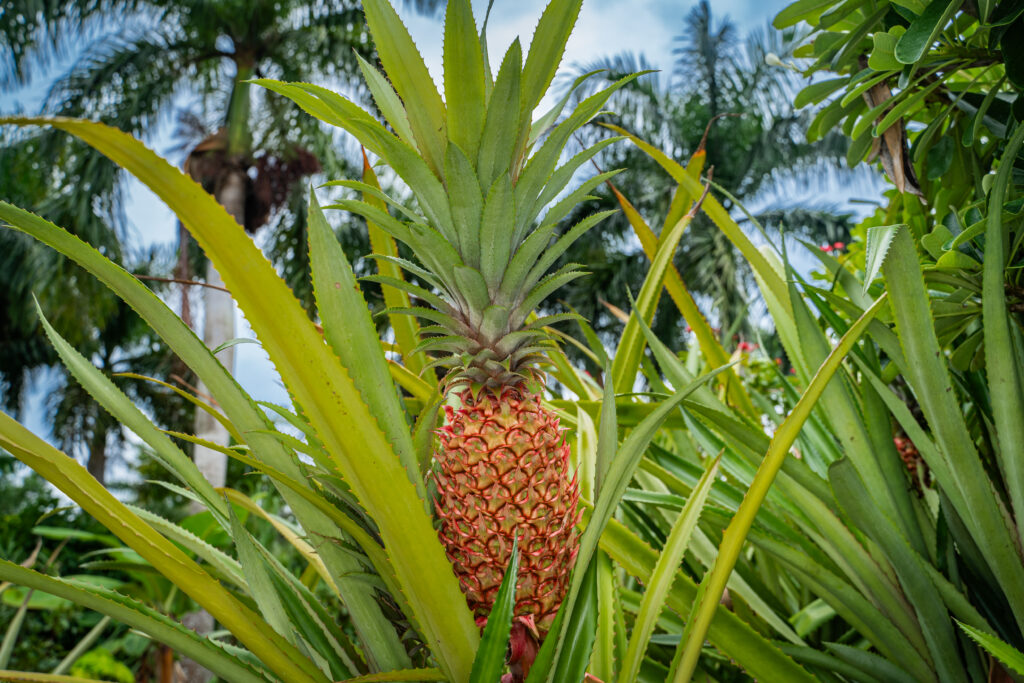
Pineapples are bromeliads. Who knew?
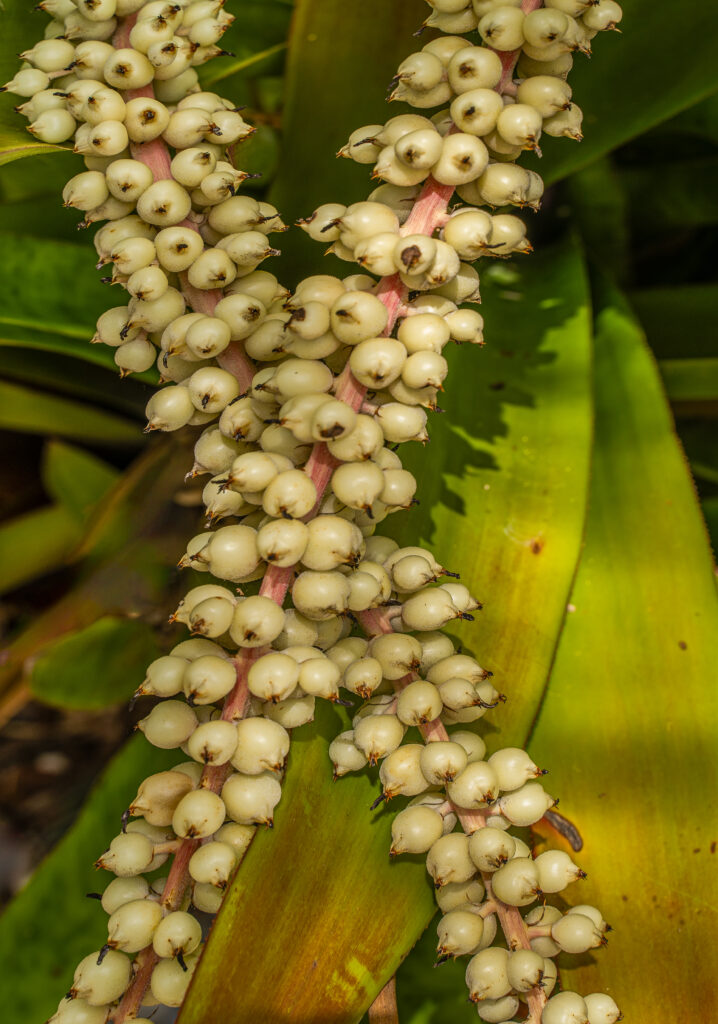
If you’re interested in seeing our fantastic collection of bromeliads, and you’re especially interested in seeing spikes, now’s a good time. Though there is no official season for inflorescence, there are generally more spikes in the warm months from April to October. Let the fireworks begin!
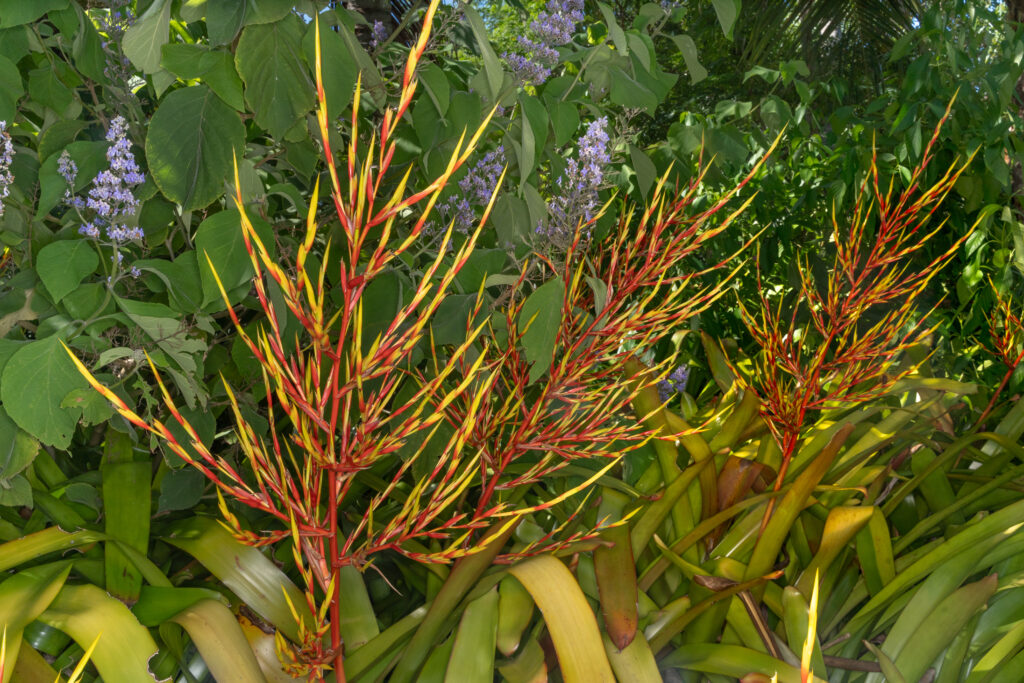
About the Author
John Eder is the Garden’s Multimedia Coordinator.


